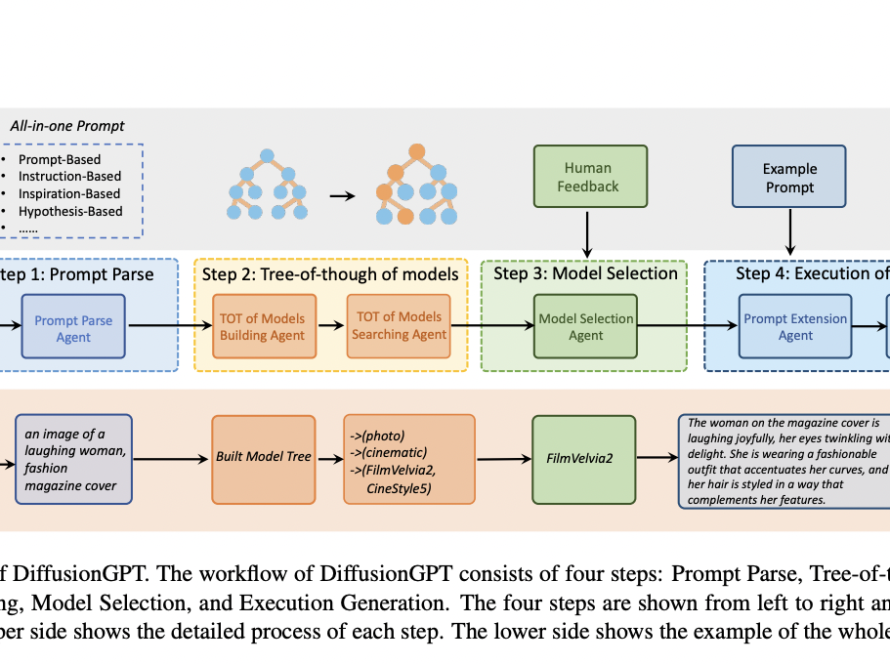[ad_1]
The challenge of seamlessly translating textual prompts or spontaneous scribbles into intricate 3D multi-view wire art has long been a pursuit at the intersection of artificial intelligence and artistic expression. Traditional methods like ShadowArt and MVWA have focused on geometric optimization or visual hull reconstruction to synthesize multi-view wire art. However, these approaches often need consistency in the fidelity of the generated visuals. This problem necessitates a more innovative and accessible solution to empower users to create complex wire sculptures.
In the multi-view wire art synthesis, existing methods like ShadowArt introduce geometric optimization to find a consistent shadow hull. At the same time, MVWA reconstructs a discrete visual hull through intersecting general cones formed by back-projecting 2D images into 3D space. Despite their contributions, these methods have limitations, leading a research team from the University of Surrey and Beijing University of Posts and Telecommunications to propose an alternative approach – DreamWire.
DreamWire redefines the generation of 3D multi-view wire art by representing it as a set of cubic Bezier curves. Each wire employs a cubic 3D Bezier curve defined by a quartet of control points. The key innovation lies in utilizing a differentiable 2D Bezier curve renderer, a transformative strategy for rendering 3D Bezier curves. The research team’s objective is to demonstrate that the projection of a 3D Bezier curve onto a plane is equivalent to a 2D Bezier curve. This insight allows them to optimize 3D wire art directly using a differentiable 2D Bezier curve renderer, specifically DiffVG.
The DreamWire pipeline begins with initializing a 3D wire art structure, where the control points of each wire are randomly initialized. Three planes of projection, corresponding to orthogonal viewpoints (X, Y, Z), are defined. The projection of the 3D Bezier curves onto these planes is achieved using the differentiable 2D Bezier curve renderer. The resulting 2D projections are processed through a Latent Diffusion Model (LDM) with Score Distillation Sampling (SDS) loss to refine the wire art based on user-specified inputs.
The research team introduced minimum spacing tree (MST) regularisation to enhance stability and coherence in the wire art structure. This involves treating the spatial relationships between wires as a graph and employing Prim’s Algorithm to derive the minimum spanning tree. The associated cost, formulated through the Euclidean distances between wire endpoints, acts as a regularization term. The final optimization objective balances the SDS loss and MST regularisation, where the hyperparameter λ is a weighting factor.
Experimental results showcase the flexibility of DreamWire. Users can provide three distinct inputs corresponding to projections from three mutually orthogonal viewpoints (X, Y, Z). The method demonstrates its capacity to align the wire art projections with user-specified inputs, whether provided as visual sketches or concise text prompts. The incorporation of MST regularisation ensures that the wires coalesce into stable and integrated structures over-optimization iterations.
In conclusion, the DreamWire methodology addresses the inherent challenges of multi-view wire art synthesis and propels the field into a more accessible and creative realm. By leveraging differentiable 2D Bezier curve rendering and introducing MST regularisation, the research team has enabled AI to bridge the gap between artistic expression and computational generation. DreamWire stands as a pioneering venture, offering a platform for artists, designers, and enthusiasts to effortlessly bring their imaginative wire sculptures to life, all with the simplicity of textual prompts or spontaneous sketches. The research team’s innovation advances the state of the art and provides a glimpse into the potential of AI-driven creativity in visual arts.
Check out the Paper and Github. All credit for this research goes to the researchers of this project. Also, don’t forget to join our 34k+ ML SubReddit, 41k+ Facebook Community, Discord Channel, and Email Newsletter, where we share the latest AI research news, cool AI projects, and more.
If you like our work, you will love our newsletter..
Madhur Garg is a consulting intern at MarktechPost. He is currently pursuing his B.Tech in Civil and Environmental Engineering from the Indian Institute of Technology (IIT), Patna. He shares a strong passion for Machine Learning and enjoys exploring the latest advancements in technologies and their practical applications. With a keen interest in artificial intelligence and its diverse applications, Madhur is determined to contribute to the field of Data Science and leverage its potential impact in various industries.
[ad_2]
Source link



